Wang et al. investigate how disruption of maternal nitric oxide affects female gametophyte development and fertility under both optimal and stress conditions.
By Junzhe Wang1,3, Xiaolong Guo1, Shengbao Xu1 and Elizabeth Vierling2
1State Key Laboratory for Crop Stress Resistance and High-Efficiency Production, College of Agronomy, Northwest A&F University, Yangling, Shaanxi 712100, China.
2Department of Biochemistry & Molecular Biology, University of Massachusetts, Amherst, MA 01003, USA.
3Hainan Yazhou Bay Seed Laboratory, Yazhou, Sanya 572025, China.
https://doi.org/10.1093/plcell/koae043
Background: In adverse environments, plants often produce more nitric oxide (NO), which plays a pivotal role in modulating plant growth and development. Additionally, under stress, the number of fertilizable female gametophytes (FGs) in plants is reduced, leading to enhanced survival of remaining offspring. The mechanisms by which the maternal plant perceives internal growth signals and external stress factors to modify FG development are still largely unknown.
Question: How does the maternal plant perceive internal growth cues and external stress conditions to regulate FG development? What are the mechanisms by which NO controls FG development?
Findings: NO homeostasis is critical for regulating FG development in Arabidopsis. NO homeostasis is precisely maintained by S-nitrosoglutathione reductase (GSNOR), an enzyme that accumulates exclusively in sporophytic tissues and indirectly governs the development of FGs prior to fertilization. Disrupted maternal NO homeostasis in hot5 mutants or addition of exogenous NO inhibits delivery of maternal auxin to the FG, thereby affecting FG development. Further, enhancing NO control capability and auxin supply can significantly increase plant fertility under stress conditions, suggesting that maternal NO homeostasis and auxin supply are key to regulating FG development. Our findings indicate that the maternal plant may integrate internal growth cues (auxin) and external stress intensity (experienced as disrupted NO homeostasis) to determine the success of FG development, providing a mechanism by which plants modulate seed set in response to fluctuating environment.
Next step: It is of interest to determine how specific changes in NO modification of proteins contribute to reducing FG development. It is also important to explore the relationship of NO homeostasis to fertility in crop species, with a focus on uncovering the potential application of these molecular mechanisms for crop improvement, particularly in the face of challenging environmental conditions.
Reference:
Junzhe Wang, Xiaolong Guo, Yijin Chen, Tianxiang Liu, Jianchu Zhu, Shengbao Xu, Elizabeth Vierling (2024) Maternal nitric oxide homeostasis impacts female gametophyte development under optimal and stress conditions. https://doi.org/10.1093/plcell/koae043
 Pyrenoids are structures that concentrate carbon dioxide around Rubisco, most commonly studied in green algae such as Chlamydomonas. However, hornworts, one of the three types of bryophytes (along with liverworts and mosses) also have a pyrenoid-based CO2-concentrating mechanism (pCCM), unique among land plants. Here, Robison et al. characterize the pCCM in the model hornwort Anthoceros agrestis. The authors used electron microscopy and live-cell imaging to visualize the hornwort pCCM. They noted some differences from the pCCM of Chlamydomonas, including that hornworts have multiple pyrenoids in each chloroplast, in contrast to the single pyrenoid in Chlamydomonas. They further showed that the hornworts lack the starch sheath present in algal pyrenoids. They also used co-IP and fluorescent reporters to identify and characterize several pyrenoid-specific proteins, noting that many are present in the hornwort pCCM, but that the linker protein EPYC1 seems to be missing. As the authors report, characterizing the pCCM in hornworts provides new opportunities to engineer such structures in crops and other land plants. (Summary by Mary Williams @PlantTeaching) bioRxiv https://doi.org/10.1101/2024.06.26.600872
Pyrenoids are structures that concentrate carbon dioxide around Rubisco, most commonly studied in green algae such as Chlamydomonas. However, hornworts, one of the three types of bryophytes (along with liverworts and mosses) also have a pyrenoid-based CO2-concentrating mechanism (pCCM), unique among land plants. Here, Robison et al. characterize the pCCM in the model hornwort Anthoceros agrestis. The authors used electron microscopy and live-cell imaging to visualize the hornwort pCCM. They noted some differences from the pCCM of Chlamydomonas, including that hornworts have multiple pyrenoids in each chloroplast, in contrast to the single pyrenoid in Chlamydomonas. They further showed that the hornworts lack the starch sheath present in algal pyrenoids. They also used co-IP and fluorescent reporters to identify and characterize several pyrenoid-specific proteins, noting that many are present in the hornwort pCCM, but that the linker protein EPYC1 seems to be missing. As the authors report, characterizing the pCCM in hornworts provides new opportunities to engineer such structures in crops and other land plants. (Summary by Mary Williams @PlantTeaching) bioRxiv https://doi.org/10.1101/2024.06.26.600872

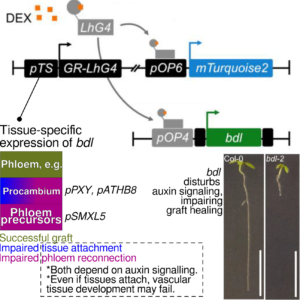
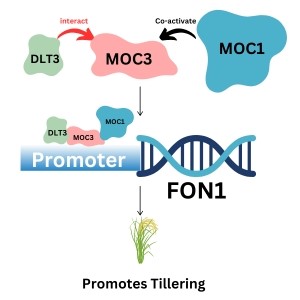
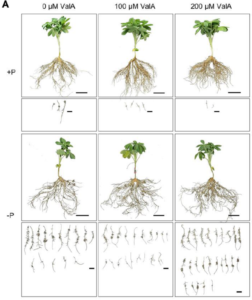
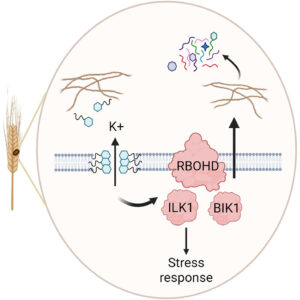
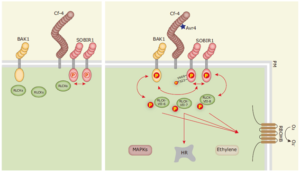
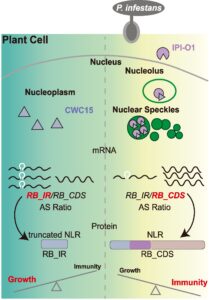
 Question: Previous studies established that in Arabidopsis plants, the PRMT5 methyltransferase protein methylates the arginine residues of proteins that are involved in the regulation of alternative splicing. To determine the importance of methylation in alternative splicing regulation, especially in response to stress, we employed the SM-LIKE PROTEIN 4 (LSM4) splicing factor as a model.
Question: Previous studies established that in Arabidopsis plants, the PRMT5 methyltransferase protein methylates the arginine residues of proteins that are involved in the regulation of alternative splicing. To determine the importance of methylation in alternative splicing regulation, especially in response to stress, we employed the SM-LIKE PROTEIN 4 (LSM4) splicing factor as a model.